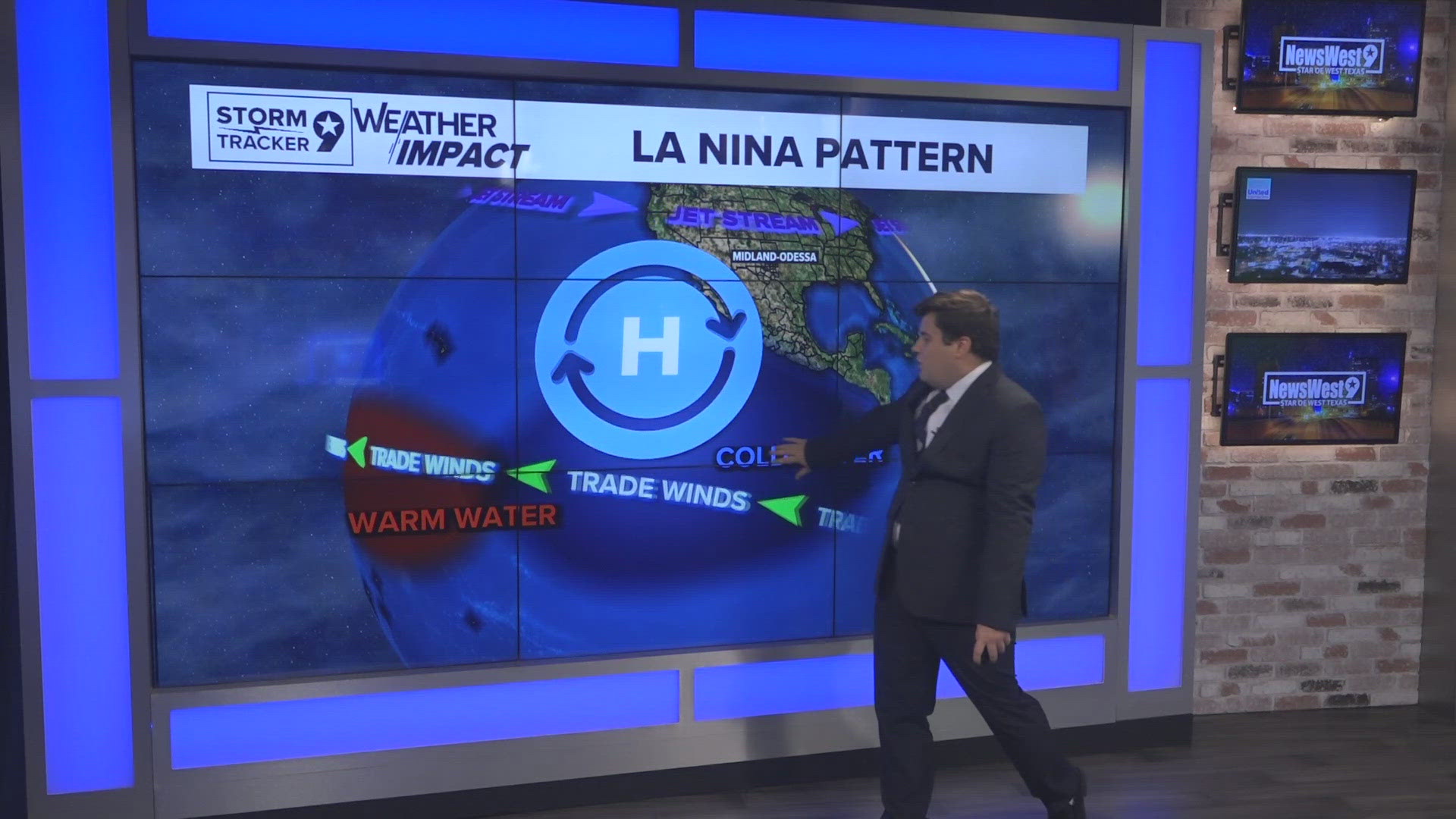Current ENSO Conditions show that we are in a Neutral State (0.1°C) but heading into a Transitional Period into a La Nina Weather Pattern. Trends show with the Latest Forecast that its trending slower than expected into a La Nina Weather Pattern which the key factor is the slow change in Sea Surface Temperatures (SST) in the East Central Equatorial Pacific (5N 5S 120W 170W). This can be due to a multitude of reasons with one of them being due to the not as strong Trade winds from the East Pacific to the West which is a driving factor to pulling cooler waters west and pushing warmer waters out also. This plays a huge impact to how our weather patterns are changing and an index called the Oceanic Nino Index is from a 3-month temperature anomaly which we use parameters to determine if we are in a El Nino Pattern and La Nina Pattern. The Values is a positive or negative value in which for La Nina, we experience cooler conditions in this region and a El Nino, we experience warmer conditions in this region in which a weak La Nina Season would be between -0.5°C to -0.9°C below average SST.

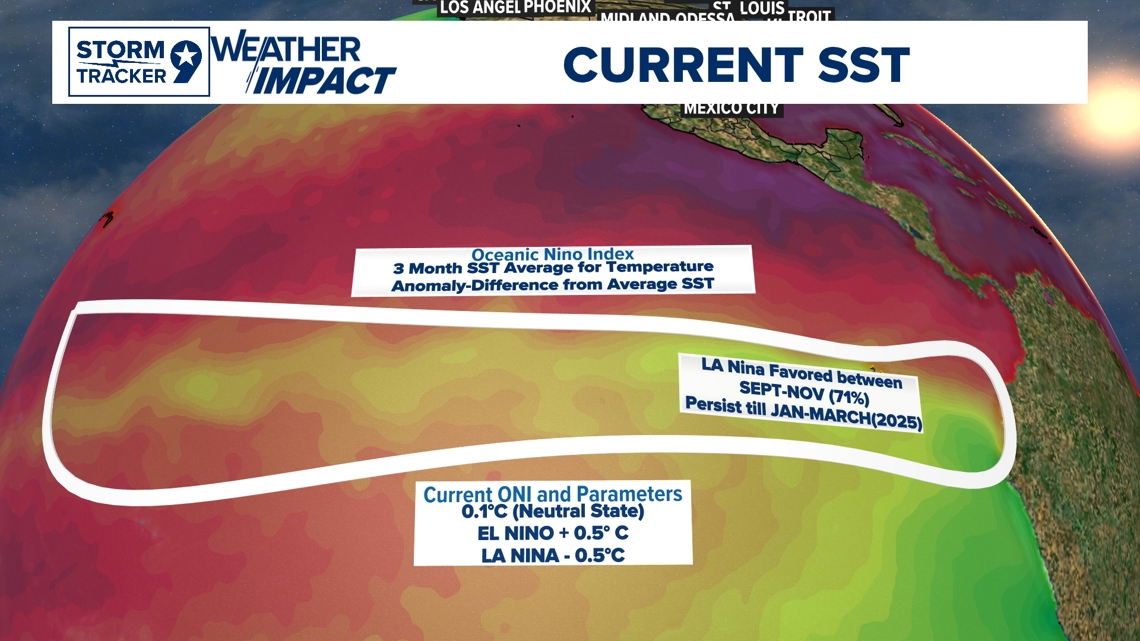
La Nina is a weather pattern that is affected everywhere with a typical dominated High Pressure which keeps the Pacific Jet Stream Steering North with the enhancement to increasing the winds of the Trade Winds in the South. The Trade Winds play a role in steering the cooler waters from the coast of South America into the pacific pushing the warmer waters west with it which is a distinct feature in a La Nina Weather Pattern.

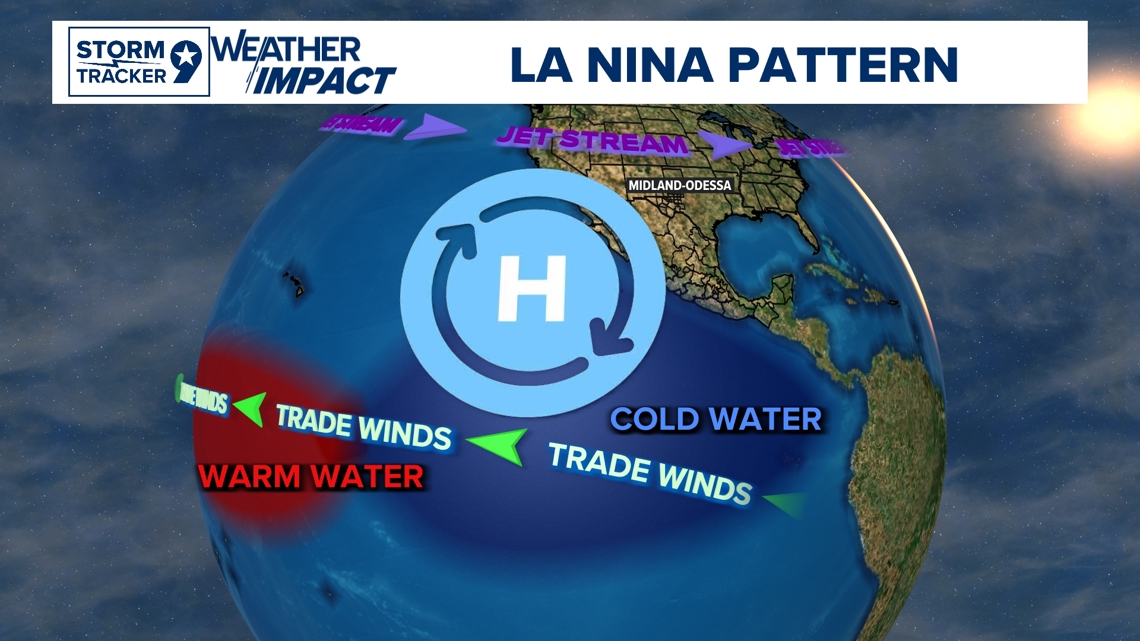
Conditions in a La Nina Pattern insist on typical High Pressure showing its dominance keeping the Pacific Jet North keeping typical wetter and cooler conditions to the Northwest and Central Part of the County with High Pressure keeping West Texas and the South in a Warm and Dry Spell. This doesn't mean the whole season will be like this as weather is variable and can change but this is a trend that is climatologically expected in a La Nina Weather Pattern. This may differ more this season due to the "Weak" La Nina Season ahead due to the slow change from our Neutral Pattern to a La Nina Pattern.

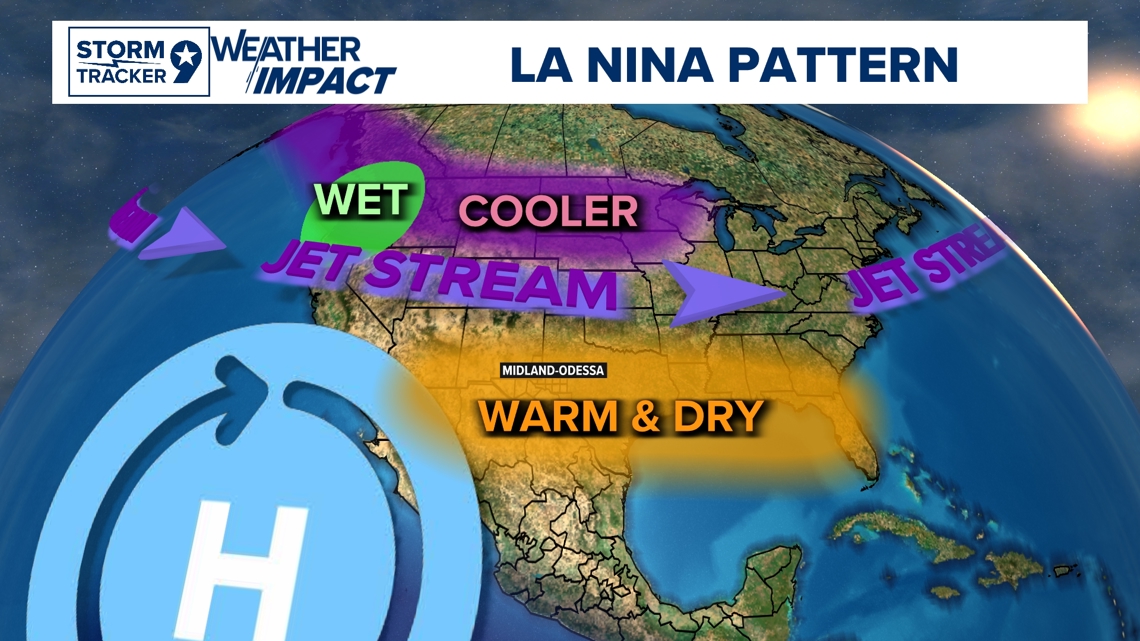
What we can fully expect in a Weaker La Nina Season is too far out to call with Certainty but with climatological standards with trends, it could have an impact on our Winter Season with possibly a less dry winter than the normal conditions with a standard La Nina Season. We could see more rain due to a weaker influence of high pressure giving the Pacific Jet Stream more leeway to make its dip bringing Artic Air into West Texas. With this, the La Nina season is expected to be shorter with a 71% Certainty of Occurring between September to November running up to the latest date between January - March. This is from the Current Forecast from the Weather Prediction Center so this may change depending on variables that could play into our Winter Season. Other impacts also include Hurricane Season which La Nina is favored for Hurricane Development and a later start could mean less impacts possible due to increased wind shear in the Gulf which La Nina on standard has weak wind shear in the Gulf which is favorable for Hurricane Development.

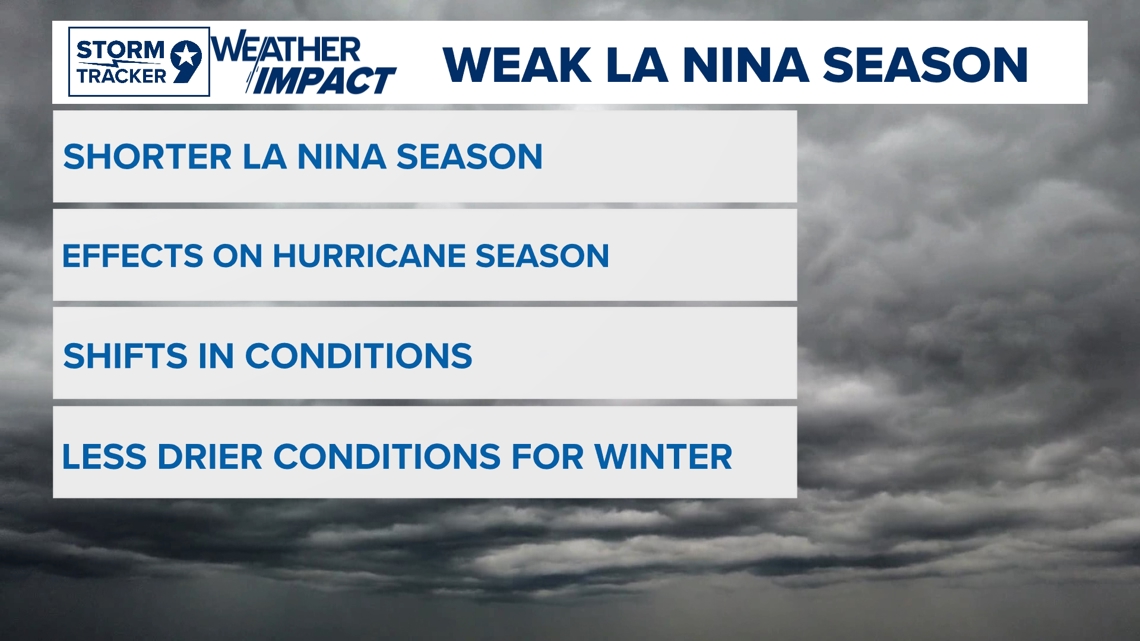
Even though our La Nina Season is off to a late start than initially expected, it doesn't mean possible huge weather impacts are off the table due as easy factors can change the look in the forecast with cold, hot, and rainy weather. It doesn't mean this is what an expected weather pattern is but in a Climatological standard, it's what it is in comparison to other weather patterns and trends. Always keep up with the Latest with NewsWest9 for when weather goes south and goes in ways that may not be normal in our weather trends.
Peace Out, Andy

